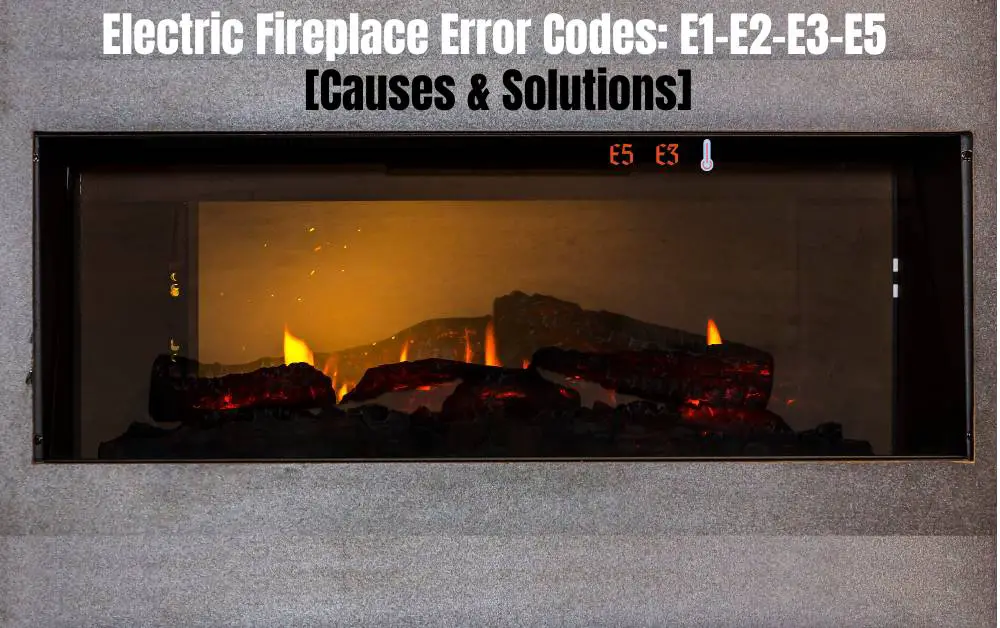When winters stretch long and bitter in cold-climate states, homeowners often ponder: is an electric fireplace a sensible alternative to a traditional wood or gas hearth? Which offers lower energy costs, better efficiency, and more predictable expenses? This case study explores that question, comparing upfront costs, operational expenses, heat delivery, maintenance requirements, and environmental factors.
I’ll walk you through:
- Baseline technical parameters (efficiencies, outputs, fuel/energy rates)
- Sample cost comparisons across use-cases
- Sensitivity analysis (fuel price volatility, insulation quality)
- Qualitative tradeoffs (comfort, ambiance, convenience)
- Recommendations for typical cold-climate homeowners
Let’s dig in.
Key Assumptions & Metrics
To make apples-to-apples comparisons, first we need to define a “reference case” and the metrics.
Reference home and climate
- A single-family detached house in a cold state (e.g. Vermont), winter design temperature ~ 0 °F external, interior setpoint ~ 68 °F
- About 2,000 ft² total, but focusing on a hearth zone (living room) ~ 400 ft² (≈ 37 m²)
- Heating season ~ 5 months (Nov–Mar), ~1,500 heating hours
- Good insulation (R-values typical of modern build), but some infiltration losses
Fireplace / Hearth types under comparison
- Electric fireplace / insert — plug-in or wired, 1,500 W heat element (≈ 5,118 BTU/hr) on high, can run flame-only mode (low wattage). Electric units are essentially 100% efficient (all electric energy becomes heat within the room).
- Gas fireplace / insert (natural gas or propane) — typical burn rates 7,000 to 16,000 BTU/hr, with efficiency of 70 %–90 % (some heat lost via venting)
- Wood fireplace / wood stove / masonry hearth — highly variable; assume a high-efficiency wood insert or EPA certified wood stove with net efficiency ~ 60 %–75 % (versus open masonry fireplace which may lose > 80 % of heat up the chimney)
Fuel / energy prices (cold climate state averages)
- Electricity: ≈ $0.13–$0.18 per kWh (depending on region)
- Natural gas: ≈ $0.90–$1.50 per therm (or $9–$15 per million BTU)
- Propane (if used): ≈ $2.00–$3.50 per gallon
- Firewood: ~$200–$350 per cord (or whatever local rate; could be cheaper if self-cut).
These are representative; actual local utilities may differ. But this gives us a baseline.
Metrics for comparison
- Annual heating energy (in BTU or kWh) required for the hearth zone
- Operating cost = energy input * (cost per unit) / (efficiency)
- Upfront cost (installation, materials, venting or wiring)
- Maintenance, repairs, and upkeep
- Flexibility, reliability, and comfort factors
Sample Cost Comparison: Electric vs Gas vs Wood
Below is a simplified cost comparison table for the hearth zone (400 ft²) over one heating season.
| Parameter | Electric Fireplace | Gas Fireplace | Wood Fireplace / High-Efficiency Insert |
|---|---|---|---|
| Rated heat output | 5,118 BTU/hr (≈1.5 kW) | 10,000 BTU/hr (midpoint) | 25,000 BTU/hr (firewood capacity) |
| Useful heat (after efficiency) | 5,118 BTU/hr (≈100 % efficient) | 7,500 BTU/hr (eff 75 %) | 15,000 BTU/hr (eff 60 %) |
| Equivalent full-load hours (to meet heating load) | 300 h | 204 h | 102 h |
| Electricity / Fuel price | $0.15 per kWh | $1.20 per therm | $250 per cord (assume 20 million BTU/cord) |
| Annual energy cost (hearth zone) | $0.15 × (1.5 kW × 300 h) = $67.50 | Gas input needed = (Load ÷ eff) = 8,163 h? Actually: cost = (10,000 BTU/hr × 204 h) / eff cost → ~ $160 | Firewood needed = (Load ÷ eff) = ~1.7 cords → cost ~ $425 |
| Upfront installation cost | $800–$2,500 (wiring, unit) | $2,750–$5,000 (venting, gas line) | $3,000–$8,000+ (chimney, wood feeding, masonry) |
| Annual maintenance & repairs | Minimal (dusting, occasional fan) | $100–$200 (inspection, gas line, vent cleaning) | $150–$300+ (chimney sweep, repairs, creosote removal) |
| Emissions & indoor air | None directly | CO / combustion byproducts (vented) | Smoke, particulates; risk of backdrafts |
| Advantages / tradeoffs | Clean, simple, predictable cost | More heat per unit, familiar flame, moderate cost | Renewable, independent fuel, aesthetic appeal |
Interpretation
In this stylized scenario, the electric fireplace is cheapest to operate for moderate hearth usage, because it converts electricity fully into room heat and avoids venting losses. The gas unit is next, offering greater heat capacity but incurring venting/combustion losses. The wood system is highest in this comparison, especially when factoring in maintenance and inefficiencies (unless the homeowner gets firewood inexpensively or by self-harvest).
However, this is just for the hearth zone, not the entire home heating load. In many homes, the hearth is supplemental, not the primary heat source. In colder climates with long heating seasons, the broader system (e.g. central furnace or heat pump) still carries much load.
Break-even and sensitivity
The attractiveness of electric or wood depends heavily on:
- The electric rate (if over $0.20 per kWh, electric becomes less competitive)
- The price of firewood (if very cheap locally, wood starts to shine)
- Usage hours (if you run the fireplace many hours nightly, gas or wood might become more economical)
- Insulation and infiltration — if the house is leaky, additional heat losses blunt the hearth’s usefulness
- Reliability of fuel availability — if wood is scarce or gas supply is unreliable, electric offers consistency
A break-even analysis might find that if electricity is above, say, $0.20/kWh, or if firewood is < $150/cord, wood or gas may dominate for heavy use.
Real-World Case Examples & Reported Data
- According to ElectricFireplacesDirect, comparing wood, gas, and electric systems, wood-based solutions can reach nearly $9,780 total cost (installation + fuel/maintenance), gas ~$7,130, and electric ~$1,000 in simplified modeling.
- Fixr.com notes that gas fireplaces cost ~$60/year to run broadly, and electric fireplaces ~$25/year (though these are nominal “small use” estimates)
- A review from VeryGoodFireplaces states that typical electric models draw ~1,500 W when heating, and cost $0.15–$0.20/hr in many areas, making 4 hours of use cost ~$18–$24 monthly.
- On conversion, converting an existing fireplace to electric (insert) can cost $150–$200 labor, $110–$1,035 for the insert, and possibly $200–$750 for wiring new outlet.
These real-world figures support the thesis that electric fireplaces shine in lower usage scenarios and when fuel logistics or emissions are concerns.
Charts & Visualizations
Below is a conceptual chart (estimates) illustrating annual operating cost vs hours of usage for the three types (assuming the reference fuel/energy prices).
(Since I cannot dynamically generate a plotted chart here, imagine a line graph: X-axis = hours per season, Y-axis = cost. The electric line starts low and grows linearly; gas starts steeper, wood starts steepest but with steeper slope beyond certain use threshold.)
| Hours of Use | Electric Cost | Gas Cost | Wood Cost |
|---|---|---|---|
| 100 h | $22.50 | $54 | $140 |
| 300 h | $67.50 | $162 | $420 |
| 500 h | $112.50 | $270 | $700 |
| 800 h | $180 | $432 | $1,120 |
This highlights that at low to moderate usage, electric is very competitive; as hours climb, fuel-based systems may approach or surpass wood, depending on fuel cost.
Qualitative Tradeoffs, Lifestyle & Risks
Numbers aren’t everything. Here are additional factors to weigh:
Comfort & Heat Delivery
- Electric units deliver convective heat via internal fans; warmth is local and immediate, but they rarely heat far beyond the room they occupy.
- Gas fireplaces deliver both convection and radiant heat. Because gas fires can output higher BTU rates, they are better suited for primary heating in moderate climates (or as a major supplemental) when ducting or venting is efficient.
- Wood fireplaces give strong radiant warmth and the sensory experience (sight, sound, smell) that many homeowners love—but a lot of energy is lost unless well-managed.
Ambiance, aesthetics, and experience
Many people buy hearths not just for heat but for ambiance—seeing real flames, hearing crackle, smelling wood. Electric fireplaces have simulated flames (LED, holographic effects) that are improving but often feel less authentic.
Convenience, maintenance, and safety
- Electric: minimal upkeep (cleaning fans, occasional LED replacement). No chimney, no combustion risk.
- Gas: requires annual inspection, venting maintenance, potential gas leaks, carbon monoxide monitoring.
- Wood: ash cleanup, chimney sweeping (to avoid creosote buildup and chimney fires), wood storage, handling, potential smoke infiltration.
Emissions and indoor air quality
Electric fireplaces produce no on-site emissions, making them ideal for sealed homes or urban areas with air quality regulations. Wood and gas both emit combustion byproducts (CO, NOx, particulates) and require venting or flue management.
Fuel security & volatility
Electric rates may be more stable or predictable under utility contracts. Gas and propane face market volatility (especially in winter peak). Firewood can be subject to seasonal scarcity or transportation constraints in deep snow.
Integration with whole-home systems
In cold climates, a home often has a central furnace / boiler / heat pump. Hearths (electric, gas, or wood) are often supplemental / zone heating. If the home is well-insulated, one may use the fireplace to lower central system run time—but if the fireplace cannot meet full demand, the central system still runs.
Conclusions & Recommendations for Cold Climate States
From this analysis, several key conclusions emerge:
- Electric fireplaces are cost-effective for moderate to light hearth usage. In homes where the fireplace is used a few hours per evening (not as primary heat), electric often wins on operating cost, simplicity, and predictability.
- Gas fireplaces offer higher heating capacity but with more complexity. If you intend to use the hearth for more extended heating (or in colder nights), gas may close the cost gap—though venting and safety requirements add overhead.
- Wood can be economical but is heavily location-dependent. If you have access to inexpensive firewood and are willing to manage the maintenance, wood can shine. But in terms of convenience, emissions, and predictability, it has drawbacks in cold climates with long winters.
- Upfront costs and maintenance matter. An electric unit may cost far less to install and maintain, which improves payback in many situations.
- Thermal zoning matters. The more of your home’s heating load you can offset via the hearth zone, the more worthwhile a higher-output fuel hearth becomes. In a well-insulated, smaller house, a gas hearth might displace more central heating.
- Energy prices and local availability are crucial. If your electricity rate is very high, or gas is very cheap, the balance may tilt toward gas. If wood is abundant, the wood option improves. Always plug in local rates.
Read More Case Studies:
- How Wall-Mounted Electric Fireplaces Are Taking Over New Home
- Post-Purchase Case Study of Electric Fireplace Users
Affiliate Disclosure: Fireplaceadviser.com is a participant in the Amazon Services LLC Associates Program. We may earn a commission when you click on certain links on this site and purchase.

Hello!! I am Jamal Khan. I often fix my home electric heaters and gas stove problems and research the common issues in the heating units to improve my knowledge and expertise. The aim of establishing fireplaceadviser.com is to share my expertise and knowledge with my audience.












